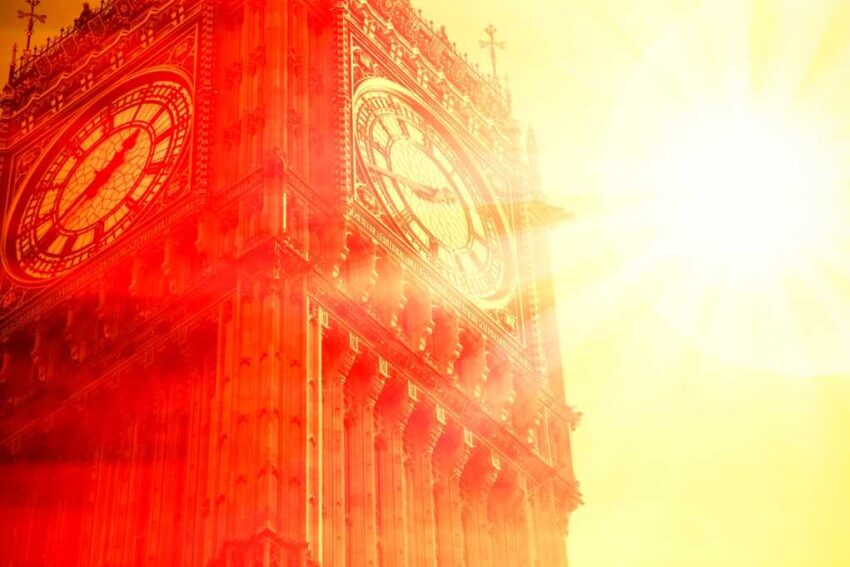London is facing soaring summer temperatures that are overwhelming public transport systems, straining residential infrastructure, and intensifying debate over the city’s lack of air conditioning.
At a Glance
- London recorded multiple days above 35 °C during August heatwave
- Underground trains often exceed 30 °C, surpassing legal livestock transport limits
- Only 40% of Tube trains currently have air conditioning installed
- New-build homes trap heat, with indoor temps above 30 °C reported
- Calls grow for AC adoption alongside passive cooling retrofits
Heatwave Strains London Life
A severe heat dome has engulfed Europe, with London enduring consecutive days above 35 °C, well beyond the city’s historical averages. These conditions have transformed daily routines, with public spaces, offices, and transport systems buckling under the prolonged heat. Meteorologists warn that such patterns are becoming more frequent due to climate change, leaving infrastructure designed for milder summers increasingly unfit for purpose.
The London Underground, once considered a cooler refuge during warm spells, now routinely experiences temperatures above 30 °C. For comparison, UK law requires livestock transport to stay below that same threshold, underscoring how extreme the conditions have become for commuters. Ventilation in many of the older, deeper Tube lines is limited, and efforts to introduce cooling solutions have so far provided patchy results.
Watch now: London Underground swelters in 2025 heatwave – No AC on trains? · YouTube
Transport for London has pledged that new Piccadilly line trains arriving in 2026 will feature built-in air conditioning. Until then, less than half of the network offers cooling systems, and commuters are left with little respite during peak travel hours.
Homes Built to Stay Warm, Not Cool
Beyond public transport, the design of many modern London homes is worsening the crisis. Recent housing developments, often praised for energy efficiency, feature dense insulation, small layouts, and limited ventilation. While effective for winter heating, these same features cause homes to trap heat during summer. Surveys reveal that many new flats regularly reach 30 °C or more indoors during heatwaves, making them difficult to inhabit for vulnerable residents.
Residents have resorted to fans, blackout blinds, and portable units, but the inadequacy of these solutions has amplified demands for new building codes that account for cooling as well as heating. The UK Green Building Council has urged wider adoption of reflective paints, external shutters, and urban greenery to offset rising temperatures. Research suggests shading and street-level vegetation can lower local ambient heat by several degrees.
Air Conditioning: From Luxury to Necessity
Historically, the UK has resisted widespread adoption of air conditioning, with fewer than 5% of households equipped compared to nearly 90% in the United States. Cultural attitudes, combined with relatively cooler past summers, made cooling systems appear unnecessary and wasteful. However, experts are now warning that prolonged high temperatures threaten both productivity and public health.
Public debate is shifting toward framing air conditioning as an essential service. Advocates point to studies showing sharp declines in cognitive function during extreme heat, and businesses are reporting reduced efficiency as offices struggle to remain tolerable. Calls are growing for government programs to expand subsidies for heat pumps, which can provide both heating and cooling, as part of broader climate adaptation strategies.
Simultaneously, local councils are being pressed to accelerate passive retrofits such as reflective building materials and improved ventilation standards. While these may ease immediate pressures, analysts caution that retrofits alone will not prevent dangerous indoor conditions if heatwaves continue to intensify in the decades ahead.
Sources
Washington Post
The Guardian
Wall Street Journal
The Times
Click this link for the original source of this article.
Author: Editor
This content is courtesy of, and owned and copyrighted by, https://deepstatetribunal.com and its author. This content is made available by use of the public RSS feed offered by the host site and is used for educational purposes only. If you are the author or represent the host site and would like this content removed now and in the future, please contact USSANews.com using the email address in the Contact page found in the website menu.





